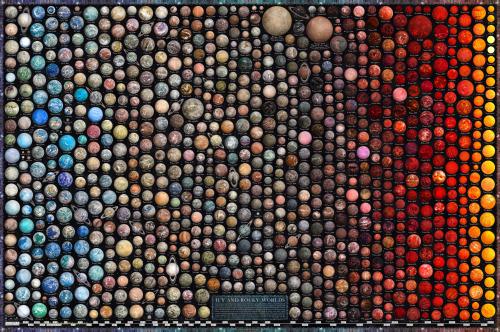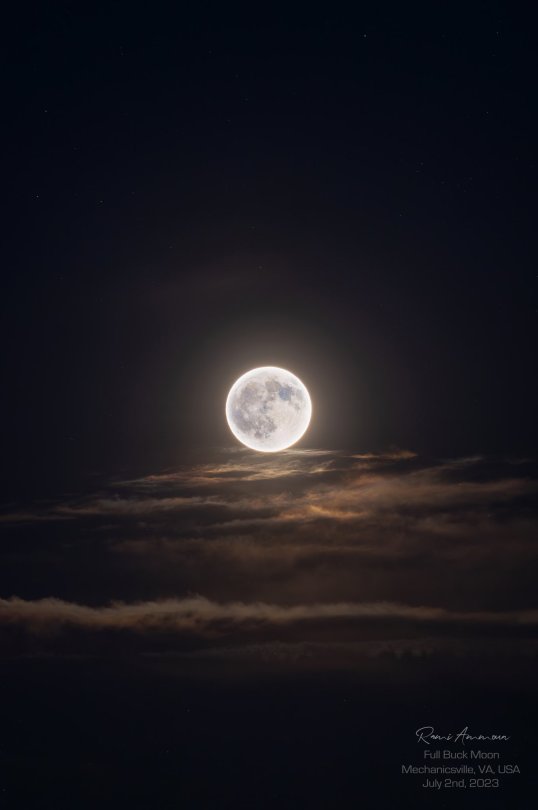Gamma Cas & Ghost Nebula © Antoine Grelin

Gamma Cas & Ghost Nebula © Antoine Grelin
More Posts from Ad-astra-affecte-spe and Others

Eruption of Tvashtar volcano on Jupiter's moon Io (March 1, 2007)

November 12, 1980: Voyager 1 made its closest approach to Saturn, flying within 124,000 kilometers (77,000 miles) of the ringed planet.


Galaxy Collisions Arp 140,143 © Hubble

2023 February 22
Our Increasingly Active Sun Image Credit & Copyright: Mehmet Ergün
Explanation: Our Sun is becoming a busy place. Only two years ago, the Sun was emerging from a solar minimum so quiet that months would go by without even a single sunspot. In contrast, already this year and well ahead of schedule, our Sun is unusually active, already nearing solar activity levels seen a decade ago during the last solar maximum. Our increasingly active Sun was captured two weeks ago sporting numerous interesting features. The image was recorded in a single color of light called Hydrogen Alpha, color-inverted, and false colored. Spicules carpet much of the Sun’s face. The brightening towards the Sun’s edges is caused by increased absorption of relatively cool solar gas and called limb darkening. Just outside the Sun’s disk, several scintillating prominences protrude, while prominences on the Sun’s face are known as filaments and show as light streaks. Magnetically tangled active regions are both dark and light and contain cool sunspots. As our Sun’s magnetic field winds toward solar maximum over the next few years, whether the Sun’s high activity will continue to increase is unknown.
∞ Source: apod.nasa.gov/apod/ap230222.html

Andromeda, If It Was Brighter
One of the largest structures in the night sky is visible with the naked eye, but if you live in a city, it's literally hiding just out of sight. Even in a dark area, it's not the easiest to immediately see, but the above image has brightened it up for us, to show us what the galaxy would look like, if only the sky was dark enough and the galaxy was a bit brighter.
The moon comparison is the best one, that is something we can all see in the night sky (unless you live in the UK, where you see mostly clouds).
Now imagine that galaxy stretching several moon-spans across the sky. That I hope gives you a minor taste of what it's like when using a small telescope or even binoculars, you first come across it.
If you live in the Northern Hemisphere, then it's well worth the search.

Near sunset, look for 3 objects which should be easy to locate, Venus and Jupiter (I'll come to this in a moment) low in the sky, the W of Cassiopeia and the Seven Sisters (Pleiades), and from that, you should find the location. Bare in mind it's several times the size of the moon, so you don't have to be too accurate, but if you can find the stars of Andromeda, that will help refine your search.

And finally that brings me on to the real star of the sky currently, Jupiter and Venus, the two brightest planets, very close together.
In fact, if you do have a really good pair of binoculars, or small telescope, this is a great time to view them. Venus often appears as a crescent like a phase of the moon, and Jupiter has it's 4 Galilean moons to spot.

Happy Spotting !

Over 800 terrestrial exoplanets visualized and arranged according to their equilibrium temperature and size.
chart by u/mVargic

JWST Breaks New Ground - Twice
Between the orbit of Jupiter and Saturn lies a small 151Km wide asteroid/minor planet called Chariklo. This left over from our early solar system hasn't been imaged before, and was too small for JWST to image too, however, the JWST team were waiting for an opportunity to do some science.
Because of it's size, the only way they could do this was if a star passed directly behind the asteroid from the location of JWST, so it was put on a watch list, and in October, this is exactly what happened.
This is the first time any telescope has been able to see an object it wouldn't ordinarily be able to image, simply due to a chance occultation, so marks a first and interesting method for looking at some of these far off objects.

The asteroid happens also happens to sport a small ring of debris, and as the star didn't quite make a direct occultation, it did pass through the debris rings, being picked up twice as it passed through.

But what really was impressive was the second bit of data gathered, as the occultation occurred JWST was able to record the composition, detecting water ice.
Up until now, it had been assumed that the asteroid would have a significant water ice component, but this is the first time anybody has been able to take some real data from it.
Objects like Chariklo tell us so much about the early solar system, how Earth got it's water, and what other systems and exoplanets are likely made from.

Thor's Helmet
NGC2359 has been featured on this blog a number of times, but this image brought to us by APOD just needed to be re-shared again.
At the heart a Wolf Rayet star, throwing off sheets of atmosphere periodically, and creating this twisted bubble of dust and gas.
The image was captured using narrowband filters, picking out specific elements and the light frequencies they resonate at when bombarded with UV light. It's allowed some of the detailed filaments to be seen.
Ultimately, in the next 15-20, 000 years, this star will go supernova, and despite it's distance of 15,000 light years, will light up our sky for a few months.

NASA's Juno spacecraft captured this look of high altitude haze forming above cyclones. At the time the image was taken, Juno was about 5,095 miles above Jupiter’s cloud tops 🛰
-
 madmax76d liked this · 2 weeks ago
madmax76d liked this · 2 weeks ago -
 iwannasinga reblogged this · 4 months ago
iwannasinga reblogged this · 4 months ago -
 nessieac liked this · 8 months ago
nessieac liked this · 8 months ago -
 itame84 liked this · 8 months ago
itame84 liked this · 8 months ago -
 voidwoken liked this · 8 months ago
voidwoken liked this · 8 months ago -
 akiramidou reblogged this · 8 months ago
akiramidou reblogged this · 8 months ago -
 goldkirk liked this · 8 months ago
goldkirk liked this · 8 months ago -
 ouranien reblogged this · 8 months ago
ouranien reblogged this · 8 months ago -
 greywolf117 reblogged this · 9 months ago
greywolf117 reblogged this · 9 months ago -
 greywolf117 liked this · 9 months ago
greywolf117 liked this · 9 months ago -
 zollioneshops reblogged this · 9 months ago
zollioneshops reblogged this · 9 months ago -
 zollioneshops liked this · 9 months ago
zollioneshops liked this · 9 months ago -
 flychicka liked this · 11 months ago
flychicka liked this · 11 months ago -
 rosefyrefyre liked this · 1 year ago
rosefyrefyre liked this · 1 year ago -
 siobhankearneywrites reblogged this · 1 year ago
siobhankearneywrites reblogged this · 1 year ago -
 hearthholmes reblogged this · 1 year ago
hearthholmes reblogged this · 1 year ago -
 unidentifiedvariable liked this · 1 year ago
unidentifiedvariable liked this · 1 year ago -
 shesapunkbaby reblogged this · 1 year ago
shesapunkbaby reblogged this · 1 year ago -
 bluejeansoul reblogged this · 1 year ago
bluejeansoul reblogged this · 1 year ago -
 dpdgwithjandp liked this · 1 year ago
dpdgwithjandp liked this · 1 year ago -
 thatprettyshitrightthere reblogged this · 1 year ago
thatprettyshitrightthere reblogged this · 1 year ago -
 v-m-smith reblogged this · 1 year ago
v-m-smith reblogged this · 1 year ago -
 fuctaculon reblogged this · 1 year ago
fuctaculon reblogged this · 1 year ago -
 my-love-my-soul liked this · 1 year ago
my-love-my-soul liked this · 1 year ago -
 samuli666 liked this · 1 year ago
samuli666 liked this · 1 year ago -
 satedanfire reblogged this · 1 year ago
satedanfire reblogged this · 1 year ago -
 satedanfire liked this · 1 year ago
satedanfire liked this · 1 year ago -
 jerzee55z liked this · 1 year ago
jerzee55z liked this · 1 year ago -
 mairem reblogged this · 1 year ago
mairem reblogged this · 1 year ago -
 mairem liked this · 1 year ago
mairem liked this · 1 year ago -
 oncemoren2thefray liked this · 1 year ago
oncemoren2thefray liked this · 1 year ago -
 coolcalmcollector-blog reblogged this · 1 year ago
coolcalmcollector-blog reblogged this · 1 year ago -
 david-watts reblogged this · 1 year ago
david-watts reblogged this · 1 year ago -
 spaceratprodigy reblogged this · 1 year ago
spaceratprodigy reblogged this · 1 year ago -
 thisk57 liked this · 1 year ago
thisk57 liked this · 1 year ago -
 virtualapricotspyturtle-blog liked this · 1 year ago
virtualapricotspyturtle-blog liked this · 1 year ago -
 whiteaxl liked this · 1 year ago
whiteaxl liked this · 1 year ago -
 kryspychickin liked this · 1 year ago
kryspychickin liked this · 1 year ago -
 hipstervampire1 liked this · 1 year ago
hipstervampire1 liked this · 1 year ago -
 amiteblue liked this · 1 year ago
amiteblue liked this · 1 year ago -
 unbearableboy liked this · 1 year ago
unbearableboy liked this · 1 year ago

★•Astronomy, Physics, and Aerospace•★ Original and Reblogged Content curated by a NASA Solar System Ambassador
204 posts


